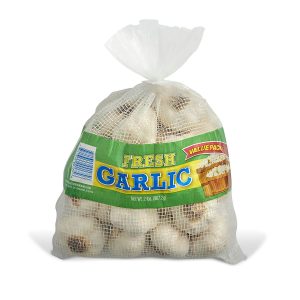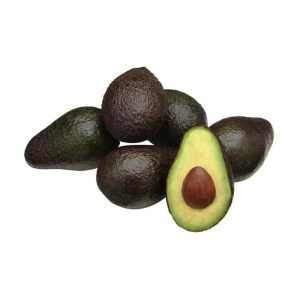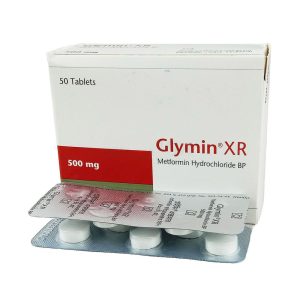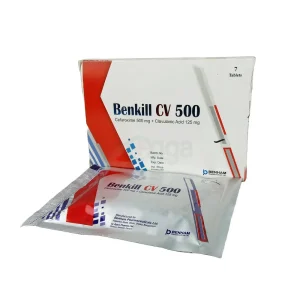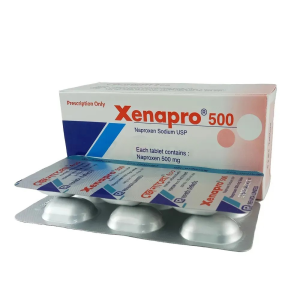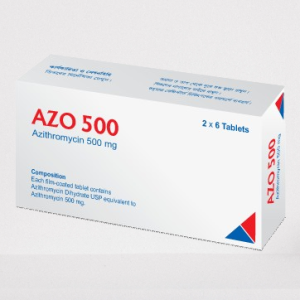Best Seller Items
-
Augason Farms Freeze Dried Beef
- Unrestrained and portable active stereo speaker
- Free from the confines of wires and chords
- 20 hours of portable capabilities
- Double-ended Coil Cord with 3.5mm Stereo Plugs Included
- 3/4″ Dome Tweeters: 2X and 4″ Woofer: 1X
৳ 64.99Augason Farms Freeze Dried Beef
৳ 64.99 -
Vita Coco Coconut Water (Pack of 12)
- Unrestrained and portable active stereo speaker
- Free from the confines of wires and chords
- 20 hours of portable capabilities
- Double-ended Coil Cord with 3.5mm Stereo Plugs Included
- 3/4″ Dome Tweeters: 2X and 4″ Woofer: 1X
৳ 20.08৳ 25.89Vita Coco Coconut Water (Pack of 12)
৳ 20.08৳ 25.89 -
Australia Banana 16 Pack 2.5 kg
- Unrestrained and portable active stereo speaker
- Free from the confines of wires and chords
- 20 hours of portable capabilities
- Double-ended Coil Cord with 3.5mm Stereo Plugs Included
- 3/4″ Dome Tweeters: 2X and 4″ Woofer: 1X
৳ 59.99Australia Banana 16 Pack 2.5 kg
৳ 59.99 -
Ocean Spray 100% Juice, 10 Ounce Bottle
- Unrestrained and portable active stereo speaker
- Free from the confines of wires and chords
- 20 hours of portable capabilities
- Double-ended Coil Cord with 3.5mm Stereo Plugs Included
- 3/4″ Dome Tweeters: 2X and 4″ Woofer: 1X
৳ 4.35৳ 9.99Ocean Spray 100% Juice, 10 Ounce Bottle
৳ 4.35৳ 9.99 -
Garlic – NZ New Season – Pukekohe – 100g
- Unrestrained and portable active stereo speaker
- Free from the confines of wires and chords
- 20 hours of portable capabilities
- Double-ended Coil Cord with 3.5mm Stereo Plugs Included
- 3/4″ Dome Tweeters: 2X and 4″ Woofer: 1X
৳ 2.56৳ 3.02Garlic – NZ New Season – Pukekohe – 100g
৳ 2.56৳ 3.02 -
NutriPlus Classic M Egg 15pcs
- Unrestrained and portable active stereo speaker
- Free from the confines of wires and chords
- 20 hours of portable capabilities
- Double-ended Coil Cord with 3.5mm Stereo Plugs Included
- 3/4″ Dome Tweeters: 2X and 4″ Woofer: 1X
৳ 7.99
-
G-Meropenem IV Injection or Infusion
Meropenem is a carbapenem antibiotic for parenteral use . It exerts its bactericidal action by interfering with bacterial cell wall synthesis. It penetrates bacterial cell walls, its high level of stability to all serine beta-lactamases and its marked affinity for the Penicillin Binding Proteins (PBPs.). It shows potent bactericidal activity against a broad spectrum of Gram-positive and Gram-negative, aerobic and anaerobic bacteria.
৳ 287.00G-Meropenem IV Injection or Infusion
৳ 287.00 -
Glymin XR Tablet (Extended Release)
Metformin is a biguanide type oral antihyperglycemic drug used in the management of type 2 diabetes. It lowers both basal and postprandial plasma glucose. Its mechanism of action is different from those of sulfonylureas and it does not produce hypoglycemia. Metformin decreases hepatic glucose production, decreases intestinal absorption of glucose and improves insulin sensitivity by an increase in peripheral glucose uptake and utilization.
-
Benkill CV Tablet
Cefuroxime is a bactericidal second generation cephalosporin antibiotic which is active against a wide range of Gram-positive and Gram-negative susceptible organisms including many beta-lactamase producing strains. Cefuroxime inhibits bacterial cell wall synthesis by interfering with the transpeptidation process.
Clavulanic acid is a naturally derived beta lactamase inhibitor produced by Streptomyces clavuligerus. It has similar structure to beta lactam antibiotics which binds irreversibly to beta-lactamase enzymes and inactivates them. Clavulanic acid gives protection of Cefuroxime from degradation by beta lactamase enzymes and provides a solution for the treatment of bacterial infections caused by beta lactam resistant bacteria.
-
Azyben Tablet
Azithromycin is acid-stable and can therefore be taken orally with no need of protection from gastric acids. It is readily absorbed; its absorption is greater on an empty stomach. Time to peak concentration in adults is 2.1 to 3.2 hours for oral dosage forms. Due to the high concentration in phagocytes, azithromycin is actively transported to the site of infection. During active phagocytosis, large concentrations of azithromycin are released. The concentration of azithromycin in the tissues can be over 50 times higher than in plasma. This is due to ion trapping and the high lipid solubility.
-
Xenapro Plus Tablet (Delayed Release)
Naproxen is a NSAID with analgesic & antipyretic properties. The mechanism of action of Naproxen is to inhibit the prostaglandin synthesis. Esomeprazole is a proton pump inhibitor that suppresses gastric acid secretion by specific inhibition of the H+/k+ -ATPase in the gastric parietal cell by acting specifically on the proton pump, Esomeprazole blocks the final step in acid production, thus reducing gastric acidity. -
Xenapro Tablet
As with other non-selective NSAIDs, naproxen exerts it’s clinical effects by blocking COX-1 and COX-2 enzymes leading to decreased prostaglandin synthesis. Although both enzymes contribute to prostaglandin production, they have unique functional differences. The COX-1 enzymes is constitutively active and can be found in normal tissues such as the stomach lining, while the COX-2 enzyme is inducible and produces prostaglandins that mediate pain, fever and inflammation. The COX-2 enzyme mediates the desired antipyretic, analgesic and anti-inflammatory properties offered by Naproxen, while undesired adverse effects such as gastrointestinal upset and renal toxicities are linked to the COX-1 enzyme.
-
Xanita Tablet
Nitazoxanide is a synthetic antiprotozoal agent for oral administration. The antiprotozoal activity of Nitazoxanide is believed to be interference with the Pyruvate Ferredoxin Oxido Reductase (PFOR) enzyme-dependant electron transfer reaction. This reaction is essential for anaerobic energy metabolism of the protozoa. Nitazoxanide and its metabolites, tizoxanid are active in vitro in inhibiting the growth of sporozoites and oocyst of Cryptosporidium parvum and trophozoites of Giardia lamblia.
-
Renacid Oral Suspension
This is the combination of Sodium Alginate and Potassium Bicarbonate. Sodium Alginate is a naturally occurring substance. It reacts with the acid in the stomach to form a gel. Potassium Bicarbonate also reacts with the acid in the stomach to form bubbles of carbon dioxide. These bubbles are trapped by the gel formed by Sodium Alginate and they allow the gel to float like a raft on top of the stomach contents. The raft prevents acid in the stomach from flowing back into the esophagus. This relieves the symptoms of reflux such as heartburn. The mode of action of this is physical and does not depend on absorption into the systemic circulation. The raft lasts for up to 4 hours on top of the stomach contents and is then broken down in the digestive system and excreted in the feces.
৳ 150.00Renacid Oral Suspension
৳ 150.00 -
Azo Tablet
Azithromycin is acid-stable and can therefore be taken orally with no need of protection from gastric acids. It is readily absorbed; its absorption is greater on an empty stomach. Time to peak concentration in adults is 2.1 to 3.2 hours for oral dosage forms. Due to the high concentration in phagocytes, azithromycin is actively transported to the site of infection. During active phagocytosis, large concentrations of azithromycin are released. The concentration of azithromycin in the tissues can be over 50 times higher than in plasma. This is due to ion trapping and the high lipid solubility.
Azithromycin’s half-life allows a large single dose to be administered and yet maintain bacteriostatic levels in the infected tissue for several days. Following a single 500 mg dose, plasma concentrations of azithromycin declined in a polyphasic pattern with a mean apparent plasma clearance of 630 mL/min and a terminal elimination half life of 68 hours. The prolonged terminal half-life is thought to be due to extensive uptake and subsequent release of drug from tissues. Biliary excretion of azithromycin, predominantly unchanged, is a major route of elimination. Over the course of a week, approximately 6% of the administered dose appears as unchanged drug in urine.
-
Pamix Tablet
Paracetamol exhibits analgesic action by peripheral blockage of pain impulse generation. It produces antipyresis by inhibiting the hypothalamic heat-regulating centre. Its weak anti-inflammatory activity is related to inhibition of prostaglandin synthesis in the CNS.
Paracetamol (Acetaminophen) is thought to act primarily in the CNS, increasing the pain threshold by inhibiting both isoforms of cyclooxygenase, COX-1, COX-2, and COX-3 enzymes involved in prostaglandin (PG) synthesis. Unlike NSAIDs, acetaminophen does not inhibit cyclooxygenase in peripheral tissues and, thus, has no peripheral anti-inflammatory affects. While aspirin acts as an irreversible inhibitor of COX and directly blocks the enzyme’s active site, studies have found that acetaminophen indirectly blocks COX, and that this blockade is ineffective in the presence of peroxides. This might explain why acetaminophen is effective in the central nervous system and in endothelial cells but not in platelets and immune cells which have high levels of peroxides. Studies also report data suggesting that acetaminophen selectively blocks a variant of the COX enzyme that is different from the known variants COX-1 and COX-2. This enzyme is now referred to as COX-3. Its exact mechanism of action is still poorly understood, but future research may provide further insight into how it works. The antipyretic properties of acetaminophen are likely due to direct effects on the heat-regulating centres of the hypothalamus resulting in peripheral vasodilation, sweating and hence heat
-
Pamix Extra Tablet
This is a combination of Paracetamol and Caffeine. Paracetamol has analgesic and antipyretic properties with weak anti-inflammatory activity. Caffeine is an alkaloid which is a theophylline-like xanthine derivative. By intermolecular association with Paracetamol, Caffeine increases the solubility and transmembrane permeation of Paracetamol. In addition, Caffeine increases the pain threshold and tolerance of pain. Caffeine has also an intrinsic power to raise vessel tone in the brain, which provides another benefit to treat migraine and headache.
-
Solupred IM/IV Injection
Methylprednisolone, a naturally occurring glucocorticoid (hydrocortisone and cortisone), which has also salt-retaining properties, is used as replacement therapy in adrenocortical deficiency states. This synthetic analog is primarily used for its potent anti-inflammatory effects in disorders of many organ systems. The intravenous injection of Methylprednisolone Sodium Succinate, demonstrable effects are evident within one hour and persist for a variable period. Excretion of the administered dose is nearly complete within 12 hours. Thus, if constantly high blood levels are required, injections should be made every 4 to 6 hours. This preparation is also rapidly absorbed when administered intramuscularly and is excreted in a pattern similar to that observed after intravenous injection. Its anti-inflammatory potency is greater than prednisolone in the ratio of 5 to 4. It has only minimal mineralocorticoid properties and has less tendency than prednisolone to induce sodium and water retention. It influences carbohydrate, protein, fat and purine metabolism, electrolyte and water balance, and the functional capacities of the cardiovascular system, the kidney, the skeletal muscle, nervous system and other organs and tissues. It exerts a suppressive effect on the immune response.
৳ 600.00Solupred IM/IV Injection
৳ 600.00

